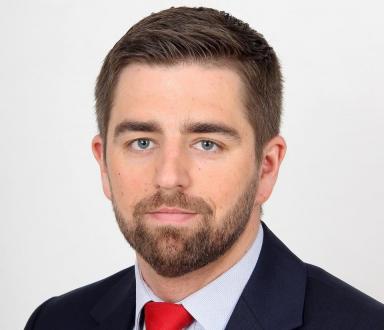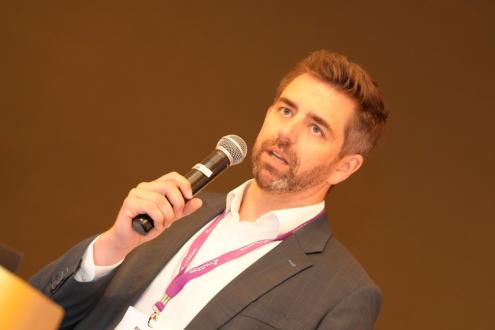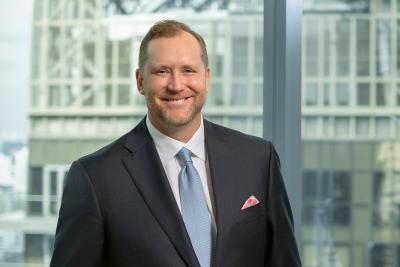Re-imagining the Role of the RM – Reflections and Advice from Accenture’s Wealth Lead for Asia

Oct 26, 2023
David Wilson is Principal Director and Asia Wealth Management Lead for Accenture Strategy & Consulting, based in Singapore. He believes that in the private banking or upper segments of clients, the dynamism and growth potential of the Asian wealth management markets can only be grasped by those banks and firms that unlock the skills, capabilities and productivity of their RMs and advisors. And in the rapidly growing mass affluent market, a digitally-led offering should be complemented by the astute use of advisory talent aided and bolstered by digital solutions to deliver a degree of personal support, but at scale. However, to achieve any or all of these goals, David told guests it is not only about empowering RMs and advisors with some additional automation, a few extra tools and a bit more training, but also about genuine disruption, whereby the role and work ‘design’ of the RM is re-imagined and redefined. Supported by a detailed but succinct slide show, he made his case to delegates at the Hubbis Digital Wealth Forum in Singapore on October 4.
Cutting edge thinking
Accenture is at the cutting edge of wealth management transformation globally. On its website, Accenture points out that no industry can escape digital's disruptive effect, especially not wealth management, adding that today’s clients expect a whole new kind of experience that is more informed, more personalised, more relevant and more transparent; and they want it more rapidly than ever before. An outstanding advisory proposition is central to this thrust, especially as interest in that offering is rising in the region.
The RM as the driver of growth
David opened his talk by explaining that the latest 2023 Accenture thought leadership report on the future of Asia’s wealth management markets highlights many key areas, all derived from an intensive survey of 20 leaders, or CXOs, in the wealth industry in the region, in addition a survey of nearly 4000 affluent and HNW investors and nearly 700 RMs and investment professionals across 12 markets. However he explained that his mission for the presentation was to focus on a core portion of the story, namely re-imagining the role of the RM. “I think we all know that RM productivity is extremely challenged, and by RM, I mean any client-facing specialists and advisors,” he stated.
He explained that the views from those 20 or so wealth market CXOs showed they expect RMs to be the key drivers of asset and revenue growth, but also acknowledged that revenue per RM is heading in the wrong direction. With the RM channel expected to deliver the future growth these leaders expect in Asia, there appears to be somewhat of a conundrum that must be addressed – somehow RM productivity must rise very significantly.
Optimism and facing realities
“There is a lot of optimism,” David remarked, “but it is counter-intuitive when these leaders expect the doubling of AUM by 2026 to come largely from the RM channel, yet productivity levels are not very favourable.”
He explained that when they modelled the rates of change, they saw pressures and erosion of revenue per RM, and for the main reasons that anyone in the industry is familiar with – far too much time spent on non-productive tasks, along with sub-optimal technology to help them in those areas, as well as seasoned talent and skills development lagging the growth in the number of clients and their expectations.
Drilling beneath the surface
“We all know there is a shortage of the right people, and hiring at ever higher rates is a zero-sum game, clearly not financially viable,” he cautioned. Accordingly, to identify and address these challenges, Accenture looked at a granular level to help understand where an RM adds value, looking at key areas across 20-plus key areas such as prospecting, onboarding, advisory, execution, servicing, and so forth, and also asking the end clients, the RMs and senior management where they think the RM can add value.
David reported there were some key findings. From the investor perspective, the only place they perceive high value-added is in the advisory, and that is aligned with the views of the RMs themselves and senior executives setting the directions for their banks and wealth firms. And they also appear to agree that for these expensive and often highly capable RMs to spend 70% or more of their time away from focusing on their value-added contributions is, as David said, “madness”.
The solution is becoming clearer
“If we can actually solve this, we can unleash a whole raft of growth in the industry, and a whole raft of client experience and employee experience improvements that we are failing to achieve today,” he said.
“But the big question is then, how that can materialise. Most firms are planning to empower RMs, which will help. This is a key step, but disruption is also required to truly solve pressures on RM productivity and service quality.”
David said that what the banks and firms they surveyed mean by empowering the RMs is really not fundamentally changing the job description of an RM, but investing in more advanced training, setting up RM skills academies, perhaps investing in much more advanced digital tooling, where they can actually have a cockpit, not just the RM, but a full cockpit, where they work through consolidation rather than multiple applications.
Fundamental change and disruption
But the next step is a much wider disruption, where they determine the important, added-value tasks the RM should pursue and try to push everything else to automation or to other channels, leveraging AI to help achieve automation at scale. “Empowerment is fine and positive but the true art of the possible is from disruption,” he stated.
Re-investing your savings
He illustrated that point with reference to a hypothetical model of a large operation with 1300 RMs and an average RM compensation of around USD120,000 per RM. Armed with the right data and strategy, David explained the providers can actually model 50% time or productivity savings to an existing RM’s working life, which for this large operator means a 50% cost saving to USD80 million from USD160 million a year.
“But we are not proposing a simple cost takeout,” he added. “Instead, the resources need to flow back to the right solutions and tools to help the RMs actually achieve that doubling of the revenues, as I mentioned earlier on.”
In short, this means fundamentally moving non-value-added activities out of the lives of the RMs and shifting them to lower-cost human channels or automating them away entirely, or perhaps a combination of the two approaches.
Re-designing the RM model
David’s final point was that this should not only be about the automation or shifting of tasks to lower cost areas of the firm or providers, but about a significant re-think in the RM job design.
“The old job design is to do everything,” he explained. “If you are to really focus every day on complex advice, relationship development and really understand the needs of your clients, the skills you will need in the future will also change; they may become a little bit less technical, a little bit more behavioural and more about innovation. To achieve those goals, you will need to embark on a considerably more disruptive journey.”

Principal Director, Asia Wealth Management Lead at Accenture
More from David Wilson, Accenture
Latest Articles






